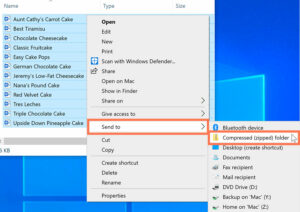Comprehensive Computer Buying Tips: A Guide to Informed Decisions

The process of buying a computer, whether it’s for work, gaming, creative endeavors, or general use, can be a daunting task given the myriad of options available in the market. Making an informed decision requires considering various factors, from hardware specifications to software compatibility. In this comprehensive guide, we explore a plethora of computer buying tips to empower you with the knowledge needed to choose the perfect computing device for your specific needs.
1. Define Your Purpose: Tailor Your Choice to Your Needs
a. Identify Your Use Case:
- Determine the primary purpose of the computer. Is it for office work, gaming, content creation, or general web browsing?
- Tailor your specifications based on your specific needs to avoid overpaying for features you won’t utilize.
b. Consider Future Needs:
- Anticipate how your computing needs might evolve over the next few years.
- Opt for a system that allows for upgrades, especially in components like RAM and storage.
2. Understand Hardware Specifications: The Heart of Your Computer
a. Processor (CPU):
- Choose a processor that aligns with your usage. For everyday tasks, a mid-range processor may suffice, while demanding tasks like video editing or gaming may require a more powerful CPU.
- Consider CPUs from reputable manufacturers like Intel or AMD.
b. RAM (Memory):
- Opt for sufficient RAM to ensure smooth multitasking. 8GB is a minimum for most users, while power users may benefit from 16GB or more.
- Check if the RAM is upgradeable for future needs.
c. Storage (HDD/SSD):
- SSDs offer faster performance than traditional HDDs. Consider a system with an SSD for the operating system and frequently used applications.
- For large storage needs, balance with an HDD or consider higher-capacity SSDs.
d. Graphics Card (GPU):
- Gamers and content creators should invest in a dedicated GPU for enhanced graphics performance.
- Integrated graphics may suffice for general use.
e. Display Quality:
- Consider the display resolution, color accuracy, and refresh rate, especially for tasks like graphic design, video editing, or gaming.
- IPS panels generally offer better color reproduction than TN panels.
3. Form Factor and Portability: Choose the Right Size
a. Laptop vs. Desktop:
- Laptops offer portability, but desktops provide more customization options and often better performance.
- Consider your lifestyle and whether portability is a priority.
b. Size and Weight:
- If opting for a laptop, consider the size and weight for easy portability.
- Desktop users should think about available space and whether a compact form factor is preferable.
c. 2-in-1 or Convertible Options:
- 2-in-1 laptops with touchscreens and convertible features offer versatility for users who need both a laptop and a tablet.
4. Operating System: Windows, macOS, or Linux?
a. Windows:
- The most widely used OS with extensive software compatibility.
- Ideal for gaming and a variety of professional applications.
b. macOS:
- Exclusive to Apple devices, known for its user-friendly interface and seamless integration with Apple ecosystem products.
- Popular among creative professionals.
c. Linux:
- Open-source and highly customizable, suitable for tech enthusiasts and developers.
- Limited mainstream software support.
5. Budget Considerations: Finding the Sweet Spot
a. Set a Realistic Budget:
- Define a budget range based on your requirements.
- Balance your needs with available options within your budget.
b. Consider Refurbished or Older Models:
- Refurbished models or slightly older versions may offer significant cost savings without compromising performance.
6. Connectivity and Ports: Plan for Expandability
a. USB Ports:
- Ensure an adequate number of USB ports for connecting peripherals.
- USB-C ports provide faster data transfer and are becoming more prevalent.
b. HDMI/DisplayPort:
- Check for compatible video output ports based on your display requirements.
c. Wireless Connectivity:
- Wi-Fi 6 provides faster wireless speeds for data-intensive tasks.
- Bluetooth support for connecting peripherals.
7. Consider Upgrade Possibilities: Future-Proofing Your Investment
a. Upgradable Components:
- Choose a system with easily upgradable components like RAM, storage, or GPU.
- This allows for adapting to future requirements without the need for a complete system overhaul.
8. Research Brand Reputation: Trustworthy Manufacturers
a. Read Reviews:
- Explore user and expert reviews to gauge the reliability and performance of the chosen brand and model.
- Pay attention to after-sales service and support.
b. Warranty and Support:
- Check the warranty period and terms.
- Research the manufacturer’s customer support reputation.
9. Energy Efficiency and Environmental Impact: Contribute to Sustainability
a. Energy Star Certification:
- Look for Energy Star-certified devices to ensure energy efficiency and reduced environmental impact.
b. Recyclability:
- Consider the recyclability of components when choosing a device to reduce electronic waste.
10. Plan for Software and Security: Ensuring a Secure Environment
a. Pre-installed Software:
- Evaluate pre-installed software and uninstall unnecessary bloatware.
- Ensure the operating system is genuine and updatable.
b. Security Features:
- Prioritize devices with built-in security features, such as fingerprint sensors or facial recognition.
- Invest in reliable antivirus software for additional protection.
11. Check for Deals and Promotions: Maximize Savings
a. Seasonal Sales and Promotions:
- Keep an eye on seasonal sales events and promotions for potential discounts.
- Consider bundling options that include accessories or software.
12. Test Before You Buy: Hands-On Experience Matters
a. Visit Physical Stores:
- Whenever possible, visit physical stores to test the look, feel, and performance of the device.
- Interact with the keyboard, trackpad, or touchscreen to ensure they meet your preferences.
13. Plan for Accessories: Enhancing Your Computing Experience
a. Consider Necessary Accessories:
- Budget for essential accessories like a protective case, external storage, or ergonomic peripherals.
- Evaluate whether the device requires specific adapters or connectors.
14. Check for Community and User Support: Tapping into Knowledge Bases
a. Online Communities:
- Explore online forums and communities related to the chosen device or brand for user insights and troubleshooting tips.
15. Keep an Eye on Technological Trends: Planning for the Future
a. Emerging Technologies:
- Stay informed about upcoming technologies that may influence your decision.
- Consider the longevity of your chosen device in the face of advancing technology.
Conclusion: A Thoughtful Purchase for Optimal Computing
In the ever-evolving world of computing, making an informed decision requires a thoughtful consideration of various factors. By defining your needs, understanding hardware specifications, considering form factors, and evaluating budget constraints, you can navigate the diverse array of options available in the market. The key is to strike a balance between performance, features, and cost, ensuring that your chosen computer aligns seamlessly with your unique requirements. Armed with these comprehensive computer buying tips, you are ready to embark on a journey toward acquiring the perfect computing companion that will meet your needs today and adapt to your evolving requirements in the future.







